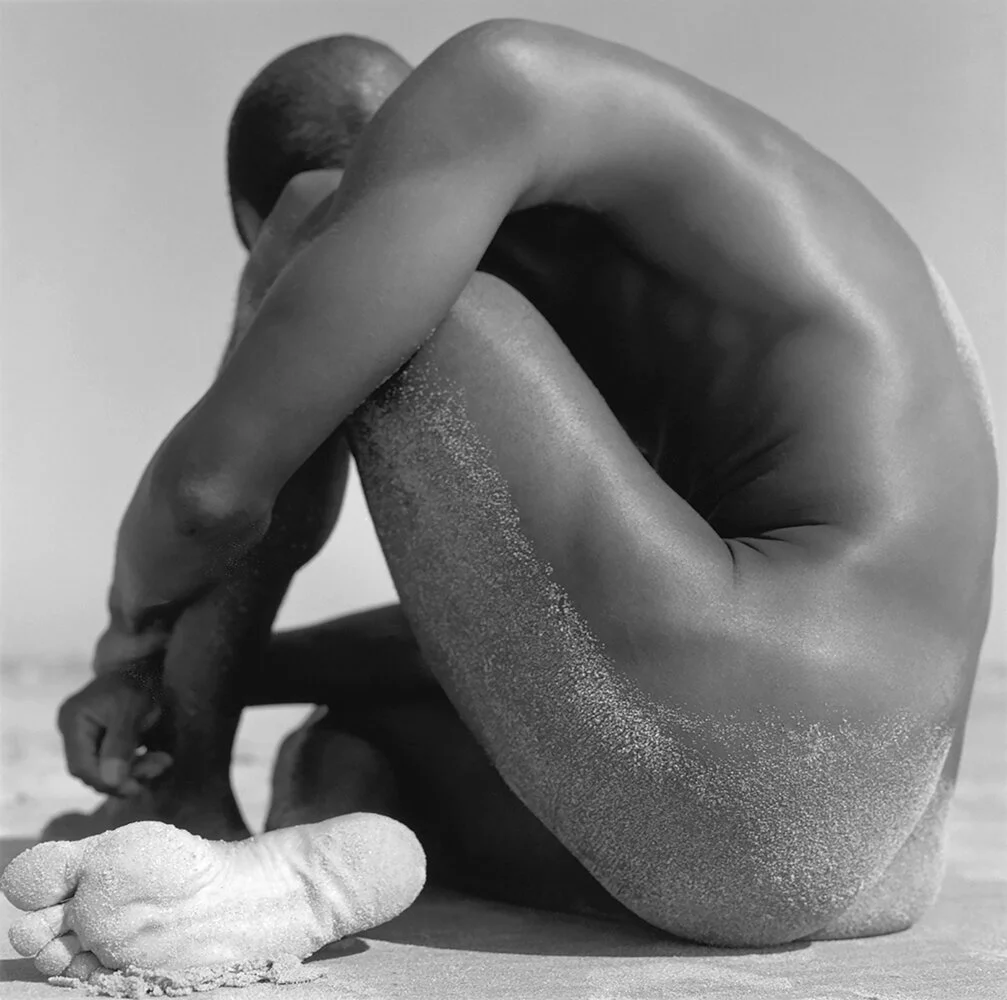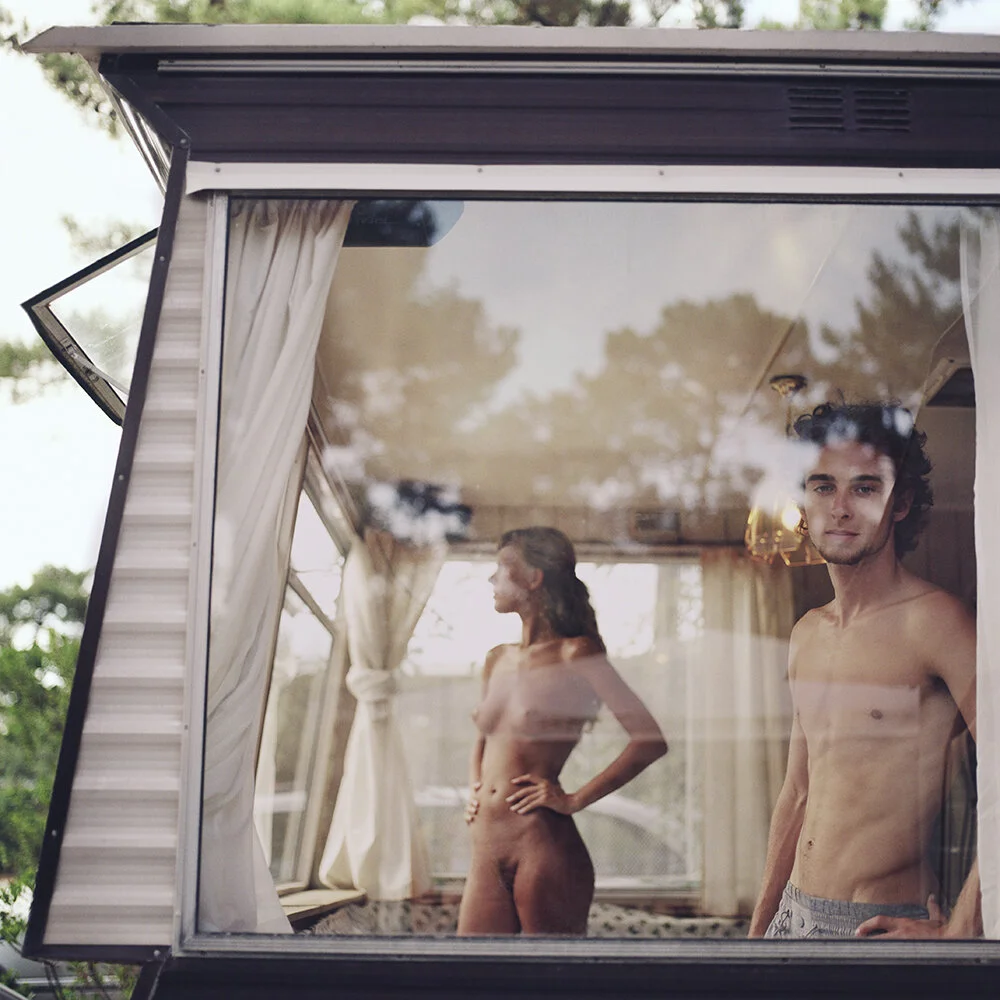Book Review: Mona Kuhn: Works
AD 6387, from series She Disappeared into Complete Silence, 2014 © Mona Kuhn
By Maggie Boccella
“Tasteful nude”: a term difficult to define in today’s day and age. What defines “tasteful” when anything goes in art? Are there criteria for it? A list of dos and don’ts that separate something like Hustler material from fine art? Or is it about the spirit—what a photographer imbues into the image with intention and purpose, rather than what a model may bring to the table?
Photographer Mona Kuhn’s work seems to address this very question, moving beyond simply documentary work into a realm of playful visual manipulation. Her large-scale nude photography employs a sense of exaggerated awareness, never quite giving the viewer everything they’re expecting, but baring so much more to the hungry gaze of the camera lens.
Scena, from series Venezia, 2010 © Mona Kuhn
After twenty years of nude portraiture, and exhibitions at the Louvre, the J. Paul Getty Museum, and the Los Angeles County Museum of Art, these demonstrations of intimacy are gathered for the first time in Mona Kuhn: Works, a retrospective exploration of her work with the human body and the figurative discourse surrounding it. Accompanied by commentary from fellows like curators Chris Littlewood and Simon Baker, Works spans the entirety of Kuhn’s career—a showcase in growth and experimentation that morphs as the artist’s understanding of the world does. It is a collection of “thoughtful and emotive images of the human condition,” as offered by Rebecca Morse, a reinterpretation of nude work for the modern photographic canon.
Jerome, from series Early Depiction, 1998 © Mona Kuhn
Works follows a natural progression, tracking Kuhn’s growth over the course of twenty years. Beginning with Early Depictions, we are greeted with black and white photography of her early work with nude models, elegant and daintily posed in an almost Mucha-esque manner. We are reminded of fragility, of how delicate the balance of life is, as hands reach towards us, inviting us in and beckoning the reader to continue paging through.
Captured, from series Evidence, 2006 © Mona Kuhn
Kuhn’s photography evolves with each page, each image building on a foundation of spirituality and a connection with everything around us. We are presented with Evidence—of what, it is not immediately certain—as the photographs draw the viewer through an Oz-ian doorway into color, multitudes of models selectively blurred out or kept in focus. Native sends her subjects into the wild, painting them and their surroundings with lush green tones in an effort to conjoin them with the natural world that sustains them. We are greeted with decadence in Venice, and sandy, washed out tones in Private—all offering new windows into Kuhn’s perspective on humanity.
Left: Bushes 3, from series Bushes and Succulents, 2018 © Mona Kuhn;
Right: Succulents 6, from series Bushes and Succulents, 2018 © Mona Kuhn
The friendships Kuhn develops with her subjects are evident the farther her Works progress, their comfort and receptiveness obvious in the way Kuhn manipulates them, baring everything—beyond just their naked bodies—to the camera. Solarizations of women’s pubic hair—where tones have been reversed so that light appears dark, and vice versa—are paired with images of plants, cleverly displayed together as Bushes and Succulents. The natural growth on a woman’s body, often seen as grotesque or undesirable, is paired with images of nature, things seen as beautiful and decorative and widely sought after. Kuhn displays an intimacy not often offered to feminine models, an acknowledgement of the everyday, rather than the made-up, magazine-marketed fantasy.
AD 6031, from series She Disappeared into Complete Silence, 2014 © Mona Kuhn
Kuhn’s Works play with reflection across mediums—reflections of light, of mirror images, of the psyche living within each of her subjects. She Disappeared into Complete Silence offers peeping Tom glimpses of the nude form through windows, reflections of outdoor surroundings blurring out the distinctness of visible bodies. The desert becomes as much of a subject as Kuhn’s model, sandy tones matching that of her skin and mixing them into their earthy surroundings like wet paint. The images are streaked through with the blue of the sky, refracting on water and window panes until her model becomes one with her environment, closing out a two-hundred page book with images of brightness, confidence, and self-reflection—concepts that, perhaps, Kuhn’s audience could be served by reflecting on.
AD 7565, from series She Disappeared into Complete Silence, 2014 © Mona Kuhn
Mona Kuhn: Works is available for pre-order from Thames & Hudson now.














